- Clone
- clone 7 (See other available formats)
- Regulatory Status
- RUO
- Other Names
- Prominin-1, AC133 Antigen, PROM1, PROML1
- Isotype
- Mouse IgG1, κ
- Ave. Rating
- Submit a Review
- Product Citations
- publications

-

Human peripheral blood mononuclear cells were stained with CD34 FITC and CD133 (clone clone 7) PE (top) or mouse IgG1, κ PE isotype control (bottom). Data shown was gated on the lymphocyte population. -

| Cat # | Size | Price | Save |
|---|---|---|---|
| 372803 | 25 tests | ¥33,660 | |
| 372804 | 100 tests | ¥81,840 |
CD133, also known as Prominin-1 and AC133 antigen, is a 120 kD pentaspan glycoprotein with 5 transmembrane domains. CD133 was initially described as a surface antigen specific for human hematopoietic stem cells and as a marker for murine neuroepithelial cells and some embryonic epithelia. Later on, CD133 was found on other stem cells, including endothelial progenitor cells, glioblastomas, neuronal, and glial stem cells. In addition to stem cells for normal tissue, CD133 was found on cancer cells, such as some leukemia cells and brain tumor cells. Although the biological function of CD133 is not completely understood, CD133 has been extensively used as a stem cell marker for normal and cancerous tissues.
Product DetailsProduct Details
- Verified Reactivity
- Human
- Antibody Type
- Monoclonal
- Host Species
- Mouse
- Immunogen
- Recombinant partial human CD133 protein.
- Formulation
- Phosphate-buffered solution, pH 7.2, containing 0.09% sodium azide and BSA (origin USA)
- Preparation
- The antibody was purified by affinity chromatography and conjugated with PE under optimal conditions.
- Concentration
- Lot-specific (to obtain lot-specific concentration and expiration, please enter the lot number in our Certificate of Analysis online tool.)
- Storage & Handling
- The antibody solution should be stored undiluted between 2°C and 8°C, and protected from prolonged exposure to light. Do not freeze.
- Application
-
FC - Quality tested
- Recommended Usage
-
Each lot of this antibody is quality control tested by immunofluorescent staining with flow cytometric analysis. For flow cytometric staining, the suggested use of this reagent is 5 µl per million cells in 100 µl staining volume or 5 µl per 100 µl of whole blood.
- Excitation Laser
-
Blue Laser (488 nm)
Green Laser (532 nm)/Yellow-Green Laser (561 nm)
- Application Notes
-
This clone can block the staining of AC133 clone in flow cytometry.
-
Application References
(PubMed link indicates BioLegend citation) -
- Swaminathan SK, et al. 2010. J. Immunol. Methods 361:110.
- Product Citations
-
- RRID
-
AB_2632879 (BioLegend Cat. No. 372803)
AB_2632879 (BioLegend Cat. No. 372804)
Antigen Details
- Structure
- 120 kD pentaspan transmembrane glycoprotein.
- Distribution
-
Hematopoietic stem cells and progenitor cells, fetal liver cells, tissue specific stem cells or progenitor cells such as renal and prostate, a variety of tumor cells
- Cell Type
- Hematopoietic stem and progenitors
- Biology Area
- Cell Biology, Immunology, Neuroscience, Neuroscience Cell Markers
- Molecular Family
- CD Molecules
- Antigen References
-
- Yin AH, et al. 1997. Blood. 90:5002.
- Miraglia S, et al. 1997. Blood. 90:5013.
- Bühring HJ, et al. 1999. Ann. NY Acad. Sci. 872:25.
- Gene ID
- 8842 View all products for this Gene ID
- UniProt
- View information about CD133 on UniProt.org
Related FAQs
- What type of PE do you use in your conjugates?
- We use R-PE in our conjugates.
Other Formats
View All CD133 Reagents Request Custom Conjugation| Description | Clone | Applications |
|---|---|---|
| APC anti-human CD133 | clone 7 | FC |
| PE anti-human CD133 | clone 7 | FC |
| Brilliant Violet 421™ anti-human CD133 | clone 7 | FC |
| PE/Dazzle™ 594 anti-human CD133 | clone 7 | FC |
| PE/Cyanine7 anti-human CD133 | clone 7 | FC |
| Purified anti-human CD133 | clone 7 | FC,IHC-P,WB |
| Alexa Fluor® 594 anti-human CD133 | clone 7 | IHC-P |
| TotalSeq™-A0126 anti-human CD133 | clone 7 | PG |
| TotalSeq™-C0126 anti-human CD133 | clone 7 | PG |
Customers Also Purchased
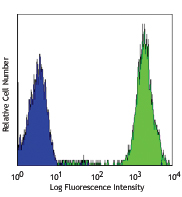

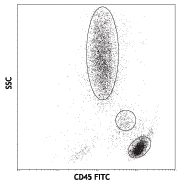
Compare Data Across All Formats
This data display is provided for general comparisons between formats.
Your actual data may vary due to variations in samples, target cells, instruments and their settings, staining conditions, and other factors.
If you need assistance with selecting the best format contact our expert technical support team.
-
APC anti-human CD133
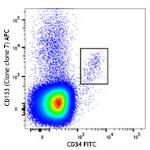
Human peripheral blood mononuclear cells were stained with C... 
-
PE anti-human CD133

Human peripheral blood mononuclear cells were stained with C... 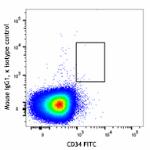
-
Brilliant Violet 421™ anti-human CD133

Human peripheral blood mononuclear cells were stained with C... 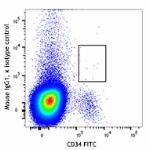
-
PE/Dazzle™ 594 anti-human CD133
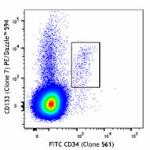
Human PBMCs were stained with anti-CD34 FITC and PE/Dazzle™ ... 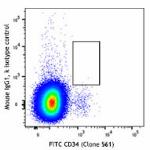
-
PE/Cyanine7 anti-human CD133

Human PBMCs were stained with anti-CD34 FITC and PE/Cyanine7... -
Purified anti-human CD133

Human peripheral blood leukocytes were stained with purified... -
Alexa Fluor® 594 anti-human CD133

Human paraffin-embedded small intestine tissue slices were p... -
TotalSeq™-A0126 anti-human CD133
-
TotalSeq™-C0126 anti-human CD133











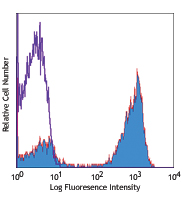



Follow Us